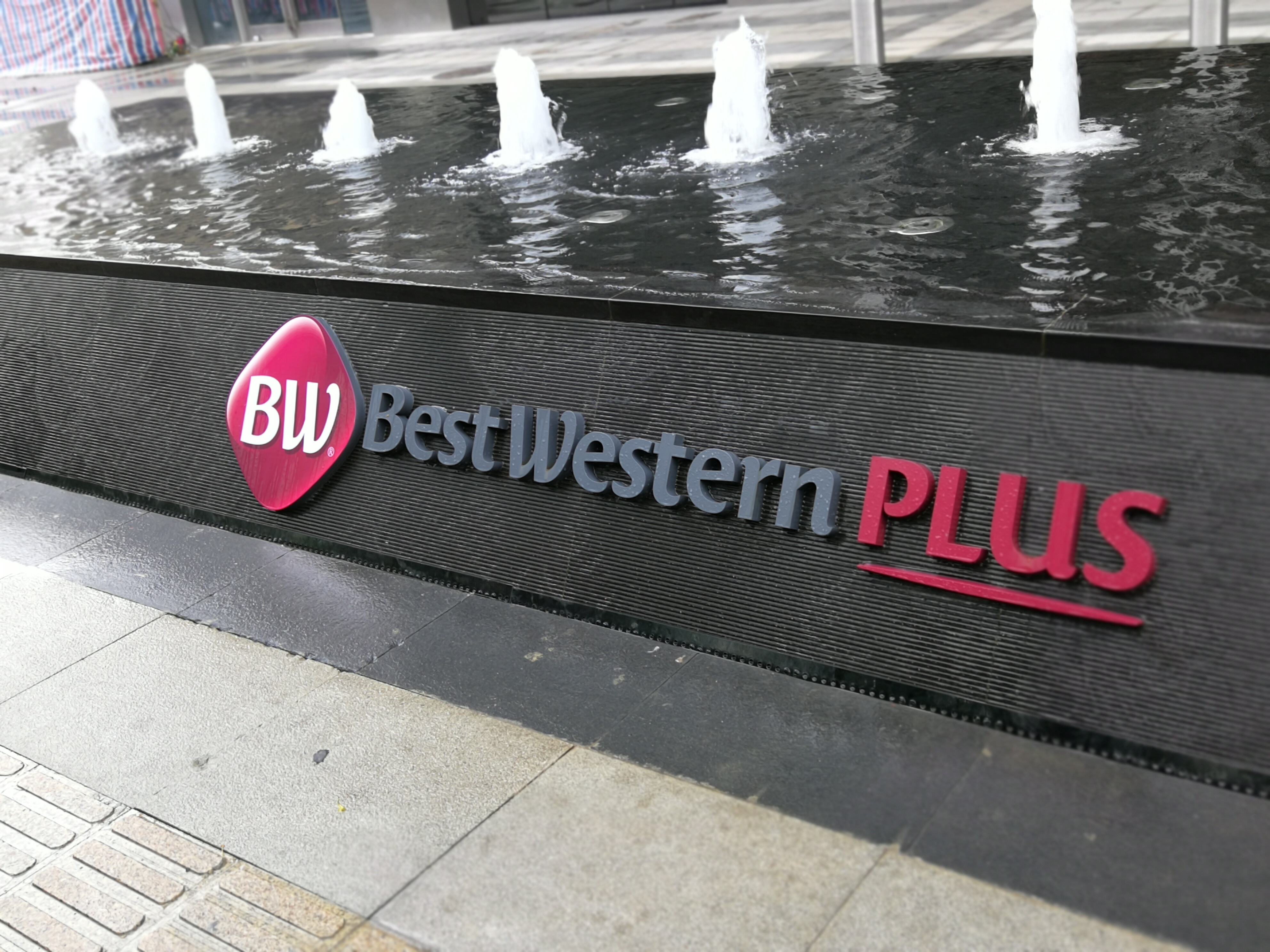Choosing Weather-Resistant Materials for Long-Lasting Outdoor Signage
Understanding How Material Composition Affects Durability in Outdoor Signage
How well materials hold up against environmental factors really comes down to their molecular makeup and chemical composition. Take aluminum for instance it doesn't warp much because the atoms stick together pretty tightly. Porous plastics tell a different story though. They tend to soak up moisture which speeds up breakdown over time. A recent study from 2023 on outdoor materials showed something interesting too. Materials that pack in more density along with those special UV stabilized polymers kept about 94% of their original strength even after sitting outside for five whole years. That kind of durability makes a big difference when choosing what goes into construction projects or outdoor furniture.
Comparing Aluminum, Stainless Steel, and Bronze for Corrosion and Environmental Resistance
Most people go with aluminum for outdoor signs because it's so light weight compared to stainless steel actually about half as heavy plus it has this natural oxide coating that stops rust from forming. Stainless steel works really well near the ocean where there's lots of salt air, since the chromium in it fights off corrosion from seawater pretty effectively. Bronze signs are another option but they weigh more and cost quite a bit more money. However, bronze does develop a nice protective greenish layer over time which makes them look great in old buildings or places where architecture matters a lot. According to what manufacturers report, aluminum signs can handle around three times as many freeze thaw cycles as bronze ones before any cracks start appearing on the surface.
Benefits of Acrylic and Polycarbonate: UV Stability and Impact Resilience
When it comes to materials for outdoor use, acrylic and polycarbonate really stand out because they handle UV exposure and physical impacts much better than most options. Acrylic is pretty amazing at blocking those harmful UV-B rays – around 98% actually – which means it doesn't turn yellow over time or break down as quickly as other plastics might. Then there's polycarbonate, which people often call bulletproof for good reason. It can take hits that are roughly 250 times stronger than regular glass would handle, plus it stays pliable even when temperatures drop or rise dramatically. This flexibility makes all the difference during bad weather events like hail storms where standard materials tend to crack or shatter completely. For anyone looking to install something outdoors that will last years instead of months, these materials beat tempered glass hands down in both durability and maintenance requirements.
Thermal Expansion and Heat Tolerance in Common Outdoor Sign Materials
| Material | Expansion Coefficient (µm/m°C) | Max Temp Tolerance |
|---|---|---|
| Aluminum | 23.1 | 300°C |
| Acrylic | 70 | 80°C |
| Polycarbonate | 65 | 120°C |
Aluminum’s low thermal expansion minimizes joint stress in hot climates, such as deserts. In contrast, acrylic and polycarbonate require 5–10mm expansion gaps during installation to prevent warping caused by temperature fluctuations.
Maximizing UV and Sun Damage Protection for Outdoor Signage
How Prolonged UV Exposure Degrades Colors and Weakens Materials
Sunlight does a number on signage materials at the molecular level, causing colors to fade and making plastics brittle over time. Acrylic signs that aren't protected from UV rays tend to lose around 40 percent of their original color after just two years sitting in direct sun, as found in research published last year in Material Science Quarterly. What's more, prolonged exposure speeds up chemical reactions in vinyl materials too. Signs made with untreated vinyl actually become weaker each year they're exposed to intense sunlight, with tests showing tensile strength drops between 15 and 20 percent annually in areas where the sun beats down hardest.
Applying UV-Resistant Coatings to Maintain Appearance and Structural Integrity
Modern UV protection relies on advanced ceramic or nano-coatings that absorb 99% of harmful UV radiation before it reaches the substrate. Leading manufacturers use multi-layer systems combining:
- UV-absorbing clearcoats effective at 380–400nm wavelengths
- Light-stabilizing additives that neutralize damaging free radicals
- Hydrophobic top layers that resist moisture penetration
A 2024 coatings analysis by signage maintenance experts found these treatments extend material lifespan by 8–12 years in temperate climates.
Case Study: Performance of UV-Protected Vinyl Versus Standard Prints Over Time
A 60-month field trial in Florida compared UV-stabilized vinyl to standard prints. The protected vinyl retained 94% of its original color, while standard versions faded to 63%. Key durability metrics showed significant advantages:
| Metric | UV-Protected | Standard |
|---|---|---|
| Crack Formation | 2% Coverage | 19% |
| Adhesive Failure | 0 Instances | 28 |
| Gloss Retention | 85% | 41% |
These results confirm UV-resistant formulations perform 3.2 times better than conventional alternatives, justifying their 25–30% higher initial cost through reduced replacement frequency.
Enhancing Corrosion and Moisture Resistance in Outdoor Signs
Preventing Rust and Oxidation in Metal-Based Outdoor Signage
Globally, metal signage loses an estimated $350 billion annually to corrosion (NACE 2023). Stainless steel and galvanized metals resist oxidation effectively due to chromium and zinc layers that block oxygen and moisture. For aluminum, anodizing techniques create a durable oxide barrier, reducing rust risk by 82% in coastal areas.
Using Powder-Coated Finishes and Galvanized Substrates for Superior Moisture Protection
Powder-coated aluminum endures over 5,000 hours of salt spray testing–eight times longer than painted steel. This electrostatic process creates a uniform, chip-resistant finish that acts as a seamless moisture barrier. When paired with zinc-silicate primers, galvanized steel reduces humidity-induced warping by 76% compared to untreated metal substrates.
Why "Weatherproof" Claims Can Fail in High-Humidity Environments
The standard weatherproof rating system, such as IP54, actually allows around 1.5 liters of water per hour to get inside equipment. That's just not enough protection when we're talking about places prone to heavy rains or coastal areas where salt air is constantly attacking materials. Recent research from 2024 showed something pretty alarming too. About two thirds of those plastic signs marked as weather resistant started showing tiny cracks after only 18 months sitting outside in really humid conditions, above 85% moisture level. Most people don't realize why these things break down so fast. Thermal cycling turns out to be a big problem nobody talks about much. When temperatures swing back and forth by more than 40 degrees Fahrenheit every day, the constant expansion and contraction slowly wears away at the seals between different parts until they finally give out.
Improving Impact and Structural Resilience of Outdoor Signage
Outdoor signs must endure both environmental extremes and physical impacts. Recent stress tests show aluminum retains 92% of its structural integrity after five years in coastal conditions, outperforming steel in salt-spray simulations.
Evaluating material performance under extreme weather and physical stress
Accelerated aging tests simulate decades of exposure to UV light, temperature extremes (-40°F to 120°F), and mechanical impacts. Polycarbonate demonstrates exceptional hail resistance, surviving 2-inch ice ball strikes at 55 mph without cracking in 89% of trials, per ASTM D7192-24 standards.
Aluminum vs. acrylic: Strength comparison in high-wind and hail conditions
| Material | Wind Resistance | Hail Resistance | Temperature Threshold |
|---|---|---|---|
| Aluminum | 90 mph sustained | Minor denting | -65°F to 300°F |
| Acrylic | 65 mph sustained | Cracking <15°F | -40°F to 180°F |
Aluminum at 0.125" thickness withstands hurricane-force winds common along the Gulf Coast. Acrylic becomes brittle below freezing, limiting its suitability in colder climates.
Reinforcing edges and joints to prevent cracking and delamination
Sealing joints with UV-stable silicones reduces water infiltration by 78% in cyclic humidity tests. Aircraft-grade aluminum rivets resist fastener corrosion–a major cause of sign failure in snowbelt regions. Edge-binding with flexible PVC gaskets extends substrate lifespan two to three times compared to untreated edges.
Protective Coatings and Maintenance Strategies for Extended Lifespan
Applying abrasion-resistant laminates and advanced ceramic or nano-coatings
Industrial-grade laminates reduce surface wear by 40–60% compared to untreated materials. Ceramic coatings form strong molecular bonds with substrates, offering 8–12 years of protection against sand erosion and chemical exposure. Nano-coatings are especially effective in coastal areas, reducing salt corrosion by 90% while maintaining flexibility down to -40°F.
Rising demand for self-cleaning and anti-graffiti surface treatments
UV-activated hydrophobic coatings allow signs to shed dirt and water naturally, cutting annual maintenance costs by $740 per sign (Ponemon 2023). Anti-graffiti epoxy layers with non-stick properties enable easy removal via pressure washing, preserving underlying graphics even after 50 cleaning cycles.
Cost-benefit of premium coatings versus frequent replacements
| Coating Type | Initial Cost | Replacement Cycle | 10-Year Total Cost |
|---|---|---|---|
| Standard Paint | $4.50/sq.ft | 18–24 months | $22.50/sq.ft |
| Ceramic Hybrid | $9.80/sq.ft | 7–10 years | $9.80/sq.ft |
| Nano-Coating | $12.20/sq.ft | 10–12 years | $12.20/sq.ft |
Premium coatings significantly reduce lifecycle costs despite higher upfront investment.
Essential maintenance: Cleaning, inspections, and proactive repairs
Biannual inspections using infrared scanners detect early coating failures invisible to the naked eye. Combined with pH-neutral cleansers and touch-up protocols, this approach extends average sign lifespan by 4.7 years. Facilities with scheduled maintenance programs report 68% fewer unexpected replacements than those relying on reactive repairs.
FAQ
What is the best material for weather-resistant outdoor signs?
Aluminum is a popular choice due to its lightweight nature and natural oxide coating that prevents rust. Stainless steel is also highly corrosion-resistant, especially near the ocean where salt air is prevalent.
Why are UV-resistant coatings important for outdoor signs?
UV-resistant coatings protect signage from the sun's harmful rays, helping prevent color fading, material brittleness, and structural weakness over time.
How do premium coatings compare to standard coatings in terms of cost?
Premium coatings have a higher initial cost but reduce the overall lifecycle cost due to their longer replacement cycles and superior protection against environmental damage.
Can acrylic be used for outdoor signs in all climates?
Acrylic is suitable for many environments but can become brittle in extremely cold climates. Aluminum is a better choice for areas subject to freezing temperatures.
What maintenance is required for outdoor signs?
Regular cleaning, inspections, and proactive repairs, such as sealing joints and applying durable coatings, can significantly extend the lifespan of outdoor signs.
Table of Contents
-
Choosing Weather-Resistant Materials for Long-Lasting Outdoor Signage
- Understanding How Material Composition Affects Durability in Outdoor Signage
- Comparing Aluminum, Stainless Steel, and Bronze for Corrosion and Environmental Resistance
- Benefits of Acrylic and Polycarbonate: UV Stability and Impact Resilience
- Thermal Expansion and Heat Tolerance in Common Outdoor Sign Materials
- Maximizing UV and Sun Damage Protection for Outdoor Signage
- Enhancing Corrosion and Moisture Resistance in Outdoor Signs
- Improving Impact and Structural Resilience of Outdoor Signage
- Protective Coatings and Maintenance Strategies for Extended Lifespan
- FAQ

